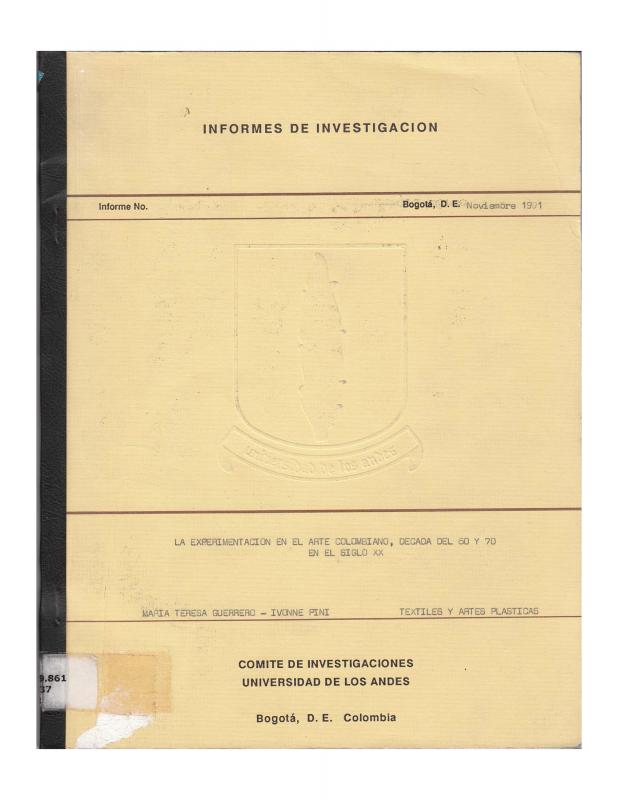Right from the start, the development of the avant-garde within Latin American countries was directly related to the process of modernization. For the visual arts, the first fifty years of the twentieth century represented a period of radical change in both the form of creating and in experiencing art. Technological advances, industrialization, and the concept of progress (among other factors) allowed an opening up and overlap of [aesthetic] languages. Therefore art began to assimilate concepts that had come from the expressive language of photography and film. For example, montage “as a concept” was a determinant for understanding approaches developed in the fields of painting and sculpture. Later, in a much broader and complex sense, there were art events that came to be called “installations” and “environments,” to name just a few of the media that arose from experimentation with new materials and the exploration of abstract art.
In their document, María Teresa Guerrero (b. 1941), and Ivonne Pini, the Uruguayan based in Colombia, maintain a view of “what is national” as related to Latin America. To a certain extent, they also link this view with the way art is being made in Europe and the United States. This is especially the case when these historians refer to the trips of some local artists as significant in their adoption of forms of art encountered abroad. Similarly, both writers emphasize that the existence of the art critics and art exhibitions allow the public to become more familiar with such new approaches. This chapter provides an overview of both the works that represent the artists’ critical stance toward Conceptual art in the 1970s and the sociocultural and political environment in which such works were created. Furthermore, they recover projects of artists that were significant in their day, such as those of Gustavo Sorzano, Alberto Uribe and the collectives El Sindicato and Grupo 44. For further information, see [doc. no.1130934].
Ivonne Pini is an art historian who specializes in Latin America. She is a professor and researcher as well as the executive editor of the journal Arte en Colombia. Her best known publications are: Fragmentos de memoria, los artistas latinoamericanos piensan el pasado (2001), and En busca de lo propio: inicios de la modernidad en el arte de Cuba, México, Uruguay y Colombia (2000). In 1982, María Teresa Guerrero organized the Textiles and Artistic Workshops Program at the Universidad de Los Andes. She is the author of the book Historia del arte textil contemporáneo en Colombia, among other publications, and was assistant director of the Galería Santa Fe. As of 2010, she was still active in art research and curating exhibitions.

